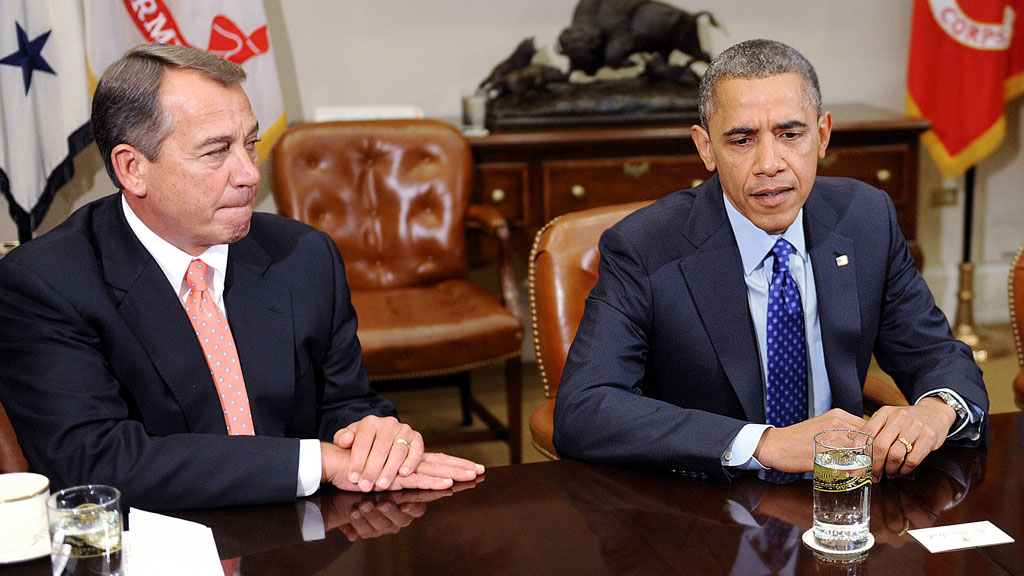What is the fiscal cliff? Your key questions answered
It is a looming deadline which will trigger sweeping tax hikes for most Americans and deep spending cuts, possibly plunging the country into another recession. We sort out the facts – and the figures.

What is the fiscal cliff?
It is the dilemma facing the United States at midnight on 31 December 2012, when a swathe of budget laws will automatically come into effect. It would mean the end of the Bush-era tax cuts for the wealthiest 2 per cent of Americans.
It would also be end of President Obama‘s temporary payroll tax cuts, affecting around 98 per cent of the country. The Tax Policy Centre estimates that the average American would see their tax bill go up by almost $3,500 a year. Emergency unemployment benefits and some other income and family tax credits would also expire, along with corporate tax breaks that need to be extended on a regular basis.
At the same time, more than 1,000 government programmes, including Medicare and defence, would face massive cuts to their budgets. It is known as the sequester, under the compromise agreed in August last year to resolve the debt ceiling crisis – and would cut spending by $1.2tr.
How serious is it?
Economists say the cuts would slash GDP by 4 per cent in 2013, plunging the United States back into economic turmoil. Unemployment could soar by 1 per cent, with a loss of 2 million jobs. In September, the Fitch ratings agency warned that the fiscal cliff represented “the single biggest near-term threat to a global economic recovery.” And the agency warned: “The dramatic fiscal tightening…could tip the US and possibly the global economy into recession.”
What are politicians doing about it?
Talks between Democrat and Republican leaders have been deadlocked, with both sides offering counter-proposals which don’t leave much room for compromise.
The Democrats, buoyed by President Obama’s election victory in November, insist that the wealthiest must pay more tax. But many Republicans have signed a public pledge to oppose any tax rises at all.
President Obama’s opening offer was roundly rejected by the GOP, who are still refusing to shift ground over tax cuts, while demanding more reductions in spending.
Is it really a cliff?
Ben Bernanke, who is chairman of the Federal Reserve, used the phrase when he was giving evidence to congress at the end of February, although the term had been floating around before that. It rapidly became used as shorthand for a complicated economic dilemma, although some experts say it shouldn’t really be described as a cliff at all.
The effects of the austerity measures, although profound, would be gradual, making it more of a fiscal slope, a staircase, or even an obstacle course. Congress could even vote to extend some, or all of the tax cuts and override the spending cuts, although that would do nothing to tackle the rising deficit. And that would trigger another crisis over the country’s $16.4tr debt ceiling, which would need to be lifted again by early spring.
What’s the likely outcome?
Amid the bluff and bravado on both sides as the deadline approaches, there is talk of some kind of “grand bargain” on long-term deficit reduction, as the only way to avoid the cliff. This would involve both parties meeting each other half way with a mixture of tax hikes and spending cuts to be phased in over the next 10 years, effectively binding the hands of future congresses to abide by the rules. Some have already dismissed that as fundamentally undemocratic.
Neither side wants to tip the economy into crisis, and polls suggest far more people would hold the Republicans to blame, than President Obama, if there is no deal. Although that makes some kind of agreement more likely than not, as yet there is no sign of what that might be, and how we might get there.
Felicity Spector writes about US politics for Channel 4 News.